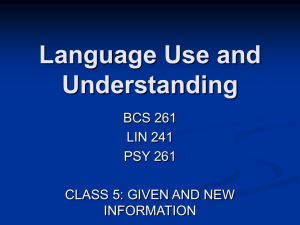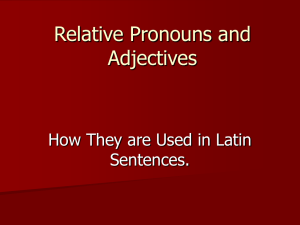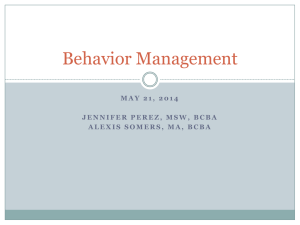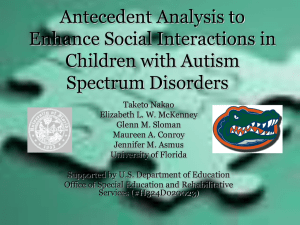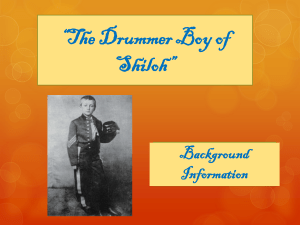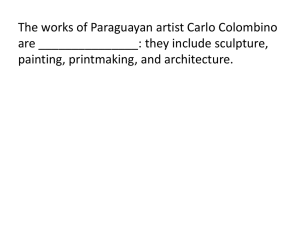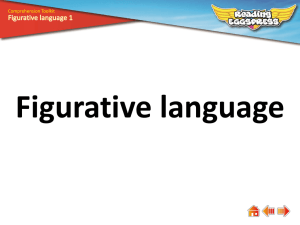Part 2
advertisement
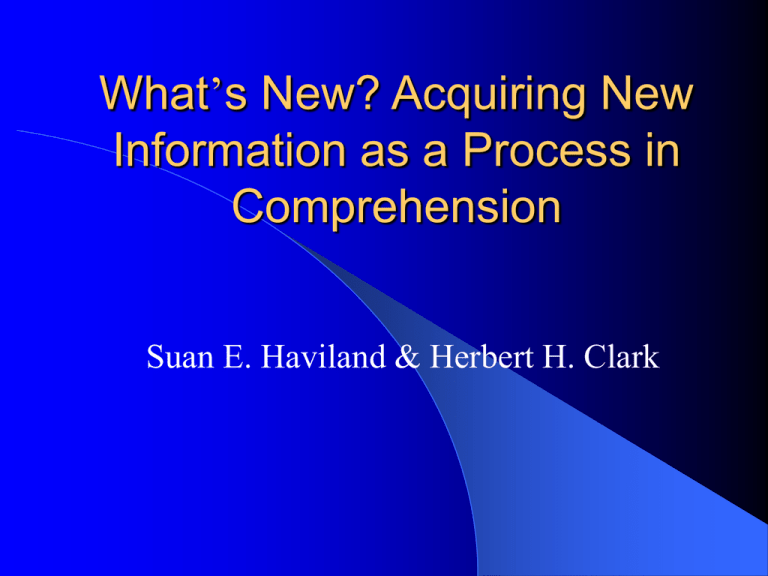
What’s New? Acquiring New Information as a Process in Comprehension Suan E. Haviland & Herbert H. Clark Overview Communication is a cooperative effort between the speaker and listener. The speaker’s purpose is to provide information to his audience, the listener’s goal is to extract the new information and integrate it with old information already in memory. Given-New Strategy is a comprehension strategy proposed by the authors. Some Important Terms Given Information = information that speaker’s audience already knows New Information = information that speaker’s audience does not know Antecedent = information already present in memory i.e. given information has an antecedent in memory Predictions by Given-New Strategy 1. If the Given Information matches something in context, that is, if it has an Antecedent, the listener will be quick to respond that he understands the sentence. 2. If the Given Information does not have a matching Antecedent, the listener will be slower to claim he comprehends the sentence. Experiment 1 Purpose: To test the predictions claimed by Given-New Strategy Procedure: Pairs of context & target sentences are presented to subjects sequentially. The sentence pairs are grouped into 2 types: Direct Antecedent Pair e.g. We got some beer out of the trunk. The beer was warm. Indirect Antecedent Pair e.g. We checked the picnic supplies. The beer was warm. • Comprehension time of target sentence are measured. Results: Comprehension time: Direct Antecedent Pairs: 835ms Indirect Antecedent Pairs: 1016ms Subjects responded on an average 181ms faster towards the direct antecedent. This agreed with the Given-New Strategy’s prediction. YET, it can be argued that the results were due to the simple facilitating effect of repetition. Experiment 2 Purpose: To test if the results from exp. 1 are due to the repetition of a noun Modification: DA pairs remained the same. IA pairs were altered. The critical noun was repeated in both sentence but it did not posit the existence of the object being referred to in the context sentence. e.g. Ed wanted an alligator for his birthday. The alligator was his favorite present. Although the noun “alligator” was mentioned in both context and target sentences, “the alligator” did not have an antecedent to match up with. (in this case, “an alligator” wasn’t the antecedent) Results Comprehension time: Direct Antecedent Pairs: 1031ms Indirect Antecedent Pairs: 1168ms Subjects responded on an average 137ms faster towards the direct antecedent. Repetition of the critical noun is not enough to account for the comprehension time difference. Experiment 3 Purpose: To investigate the model with various types of presupposition & what effect of negation has on the process Presupposition: used adverbs e.g. still, either, again, too Negative Antecedent: Given information is expressed in negation in the context sentence. (subjects had to deduce the meaning and therefore required a longer comprehension time) Experiment 3 The target sentences for DA, IA and NA were identical. The only difference was in the context sentences. Predictions: Comprehension times for DA should be shortest among the 3 pairs. No direct relationship between IA and NA. Results Comprehension time: DA = fastest for all 4 adverbs IA, NA = roughly equal for all the adverbs except ‘either’ Conclusion According to Given-New Strategy, listeners break sentences into Given & New information, and then attempts to add New information to memory using the Given information as a pointer to some Antecedent already in memory. If no Antecedent is present, listeners must build some sort of bridging structure, treat all information as new and begin construction or a new structure, or attempt to recompute what is Given and what is New in the sentence. Three layers of comprehension 1)Shallow = judge how comprehensible a sentence is without actually comprehensing it fully 2)Deep = be able to comprehend a sentence without relating it to context 3)Deepest = comprehend sentences with respect to context (assuming subjects used the 3rd level of comprehension) Discussion 1. The authors don't say much about the difference between the Direct and Indirect Antecedents compared to Direct and Negative Antecedents, they just state that Indirect and Negative are equally slow compared to Direct. However, aren't these differences caused by very different processes? The whole argument behind the Direct/Indirect Antecedent difference is that there is no clear antecedent to which the new information may be readily attached. but in the Negative Antecedent condition, the antecedent exists, it is just in a less clear form. Might the differences just be caused the amount of time it takes to resolve 'not sober' and 'drunk' as the same thing? 2. How or why might changing every definite article to an indefinite article in Bransford and Franks' experiment have affected their results? 3. How does the Given-New Strategy account for the results of the Bransford and Johnson (1973) study? The authors didn't explain this very well. 4. How would the comprehension times of the first sentence compare with the comprehension of the second sentence? 5.Would this effect be seen in longer sentences that gave the old and new information at once? 6.Other than acknowledging its existence, the authors seem to pay little attention to the fact that some of these sentences can have more than one meaning (Stephen can't dance the rhumba either). What effect, if any, does that have on their results, other than the fact that these may potentially take longer to compute? 7. The idea of context in this paper seems to be representative of something closer to memory of what we have previously learned (something like pragmatics discussed in previous papers). How does its implementation compare with that of the use of context along with syntax in language comprehension? 8. Is it possible to erase these connections between antecedents and new information? For example, if you realize you misinterpreted the given information and therefore attached the new information to the wrong antecedent. 9. What about the times when you know you've learned something before (so there would be an antecedent), but you just can't remember it? Would you have to construct a new antecedent since otherwise you would have nothing to attach the new information to? 10. Could this result be replicated with subjects with damaged short term memory? Are the authors arguing that this given information has to be consciously known about (explicit)? 11. I still don't quite understand how reliable their testing of "understanding" was. Without a post-test of some sort, it seems like the people could press the button whenever they wanted? 12.Wouldn't your rate of reading affect these results? Some people read things much faster than others, which would lead to shorter response times because they would have more time to interpret the sentence. 13.Is it common for a speaker to make an error regarding what knowledge is 'given' between two people? 14. Are these effects seen in ASL as well?
